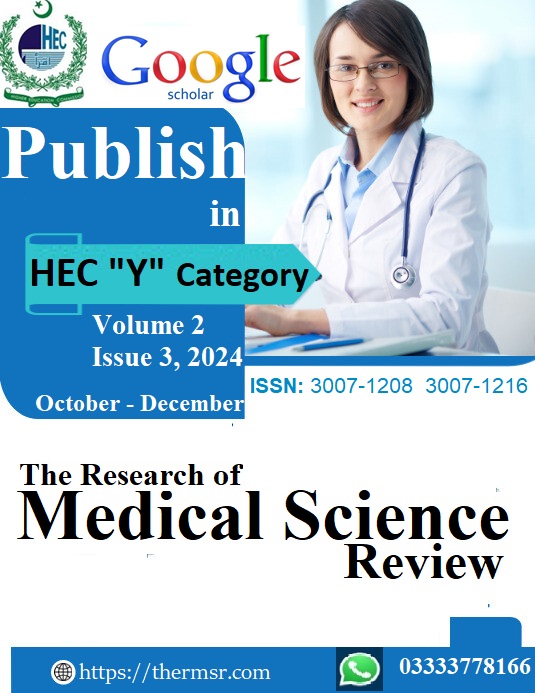CORRELATION PATTERNS OF SYMPTOMS AND PREVALENCE RATE OF HELICOBACTER PYLORI AMONG SUSPECTED GASTRITIS PATIENTS AT BAYAZID ROKHAN TEACHING HOSPITAL, KABUL, AFGHANISTAN
Keywords:
H. pylori, gastritis, prevalence, epigastric pain, public healthAbstract
Background: Gastritis, an inflammation of the stomach lining, is commonly caused by Helicobacter pylori (H. pylori), particularly in low-income regions due to poor sanitation. H. pylori infection increases the risk of peptic ulcers and gastric cancer, making its study in Kabul, Afghanistan, crucial for public health.
Aims: This study assessed H. pylori prevalence among suspected gastritis patients at Bayazid Rokhan Teaching Hospital and analyzed its correlation with demographic factors and gastrointestinal symptoms.
Methodology: A cross-sectional study was conducted on 246 patients from November 2023 to January 2024. Stool samples were analyzed using antigen detection tests, and data were processed with SPSS 26 to determine infection prevalence and symptom correlations.
Results: H. pylori infection was found in 67.9% of patients, with a higher rate in females (51.5%) and the highest prevalence in the 19–28 age group (32.3%). Epigastric pain (66.5%), nausea (63.5%), and heartburn (60.5%) were significantly associated with infection.
Conclusion: H. pylori-induced gastritis is prevalent in Kabul, necessitating improved hygiene, routine screening, and targeted treatments. Further research should focus on multimodal diagnostics and resistance-based therapies.
Downloads
Downloads
Published
Issue
Section
License

This work is licensed under a Creative Commons Attribution-NonCommercial-NoDerivatives 4.0 International License.














